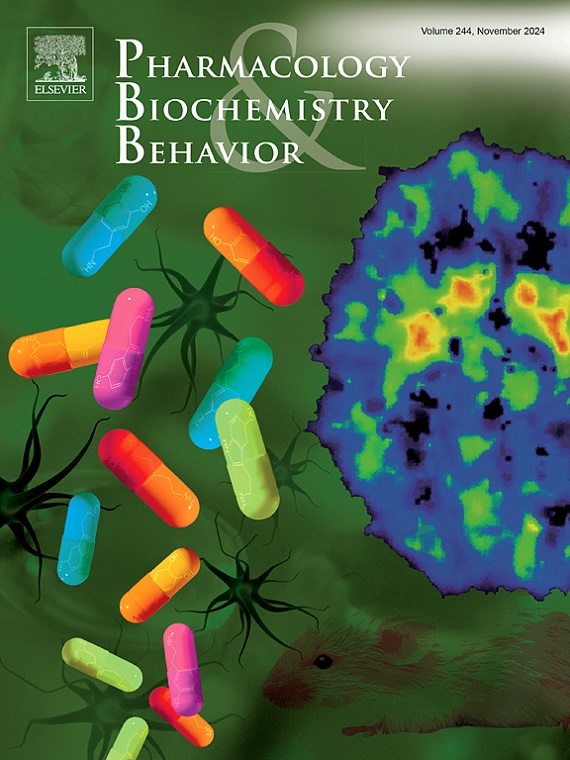Different protocols of REM sleep deprivation led to controversial effects on OCD- and anxiety-like behaviors and locomotor activity in fear conditioning male and female rats with respect to BDNF expression level
IF 3.3
3区 心理学
Q1 BEHAVIORAL SCIENCES
引用次数: 0
Abstract
Specific protocols of rapid-eye movement (REM) sleep deprivation (SD) may lead to behavioral phenotypes considered as obsessive-compulsive disorder (OCD)-like behavior and hyperactivity (mania-like behavior). The present study aimed to assess the effects of REM SD on both sexes of control and fear conditioning (FC) rats. REM SD was induced for 1 or 2 or 3 weeks (6 h/d). Freezing, locomotor activity, anxiety-like behavior, grooming and burying marbles (OCD-like behaviors), and brain-derived neurotrophic factor (BDNF) in the hippocampus were evaluated. The results showed 1w REM SD decreased freezing in females, while 2w and 3w REM SD decreased freezing in both sexes. Locomotor activity in 2w REM SD males was increased, while was decreased in 3w group. In females, both 2w and 3w REM SD increased locomotion. REM SD in both sexes increased locomotion in FC rats. All REM SD protocols decreased anxiety in both sexes of FC rats. REM SD in control and FC rats led to OCD-like behaviors. All REM SD protocols decreased BDNF in both sexes, while 3w slightly increased it, suggesting a compensatory mechanism over time. 2w and 3w REM SD increased BDNF in FC rats in both sexes. Pearson correlation test also showed that changes in BDNF levels may be related to some behavioral changes only in females. In conclusion, for the first time, the present study showed sex differences in the effects of REM SD on behavioral functions in control and FC rats, and in the relationship between BDNF levels and behavioral changes.
不同的快速眼动睡眠剥夺方案导致恐惧条件下的雄性和雌性大鼠在BDNF表达水平方面对强迫症和焦虑样行为和运动活动的影响存在争议
快速眼动(REM)睡眠剥夺(SD)的特定协议可能导致被认为是强迫症(OCD)样行为和多动(躁狂样行为)的行为表型。本研究旨在评估快速眼动SD对两性控制和恐惧条件反射(FC)大鼠的影响。快速眼动SD诱导1、2、3周(6 h/d)。评估冻结、运动活动、焦虑样行为、梳理和掩埋弹珠(强迫症样行为)以及海马脑源性神经营养因子(BDNF)。结果显示,1w快速眼动SD降低了女性的冻结,而2w和3w快速眼动SD降低了两性的冻结。2w组运动活动增加,3w组运动活动减少。在女性中,2w和3w的REM SD都增加了运动。两性的快速眼动SD均增加了FC大鼠的运动。所有快速眼动SD方案均能降低FC大鼠的焦虑。对照大鼠和FC大鼠的REM SD导致了类似强迫症的行为。所有快速眼动SD方案都降低了两性的BDNF,而3w略有增加,这表明随着时间的推移存在一种补偿机制。2w和3w REM SD均使FC大鼠BDNF增加。Pearson相关检验还表明,BDNF水平的变化可能只与女性的某些行为变化有关。综上所述,本研究首次揭示了REM SD对对照大鼠和FC大鼠行为功能影响的性别差异,以及BDNF水平与行为改变的关系。
本文章由计算机程序翻译,如有差异,请以英文原文为准。
求助全文
约1分钟内获得全文
求助全文
来源期刊
CiteScore
6.40
自引率
2.80%
发文量
122
审稿时长
38 days
期刊介绍:
Pharmacology Biochemistry & Behavior publishes original reports in the areas of pharmacology and biochemistry in which the primary emphasis and theoretical context are behavioral. Contributions may involve clinical, preclinical, or basic research. Purely biochemical or toxicology studies will not be published. Papers describing the behavioral effects of novel drugs in models of psychiatric, neurological and cognitive disorders, and central pain must include a positive control unless the paper is on a disease where such a drug is not available yet. Papers focusing on physiological processes (e.g., peripheral pain mechanisms, body temperature regulation, seizure activity) are not accepted as we would like to retain the focus of Pharmacology Biochemistry & Behavior on behavior and its interaction with the biochemistry and neurochemistry of the central nervous system. Papers describing the effects of plant materials are generally not considered, unless the active ingredients are studied, the extraction method is well described, the doses tested are known, and clear and definite experimental evidence on the mechanism of action of the active ingredients is provided.

 求助内容:
求助内容: 应助结果提醒方式:
应助结果提醒方式:


